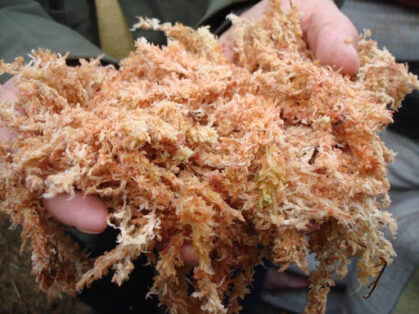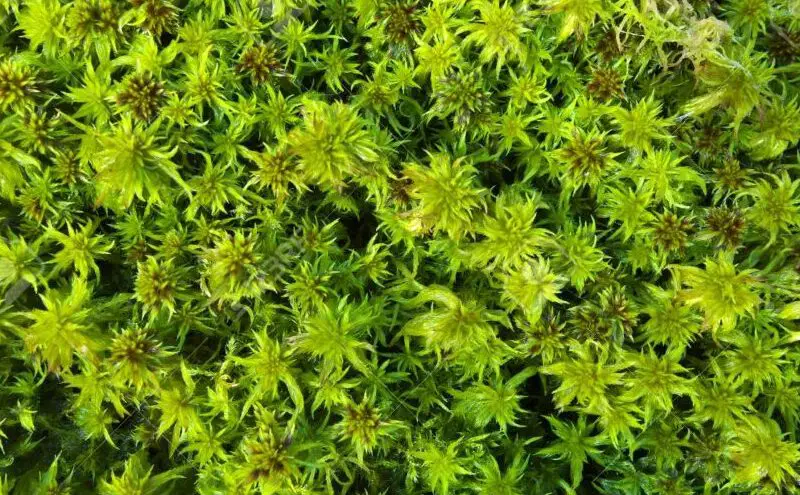Support of culture, very appreciated, the peat moss is of a sought-after and perfectly organic element which destroys the bacteria, thus named bactericide.
All plants can be accommodated in the peat moss. From cacti to aquatic plants.
The possible uses :
- Indoor plants: in the absence of ventilation and in the confined atmospheres of our interiors, the plants sometimes have difficulty to proliferate. All the more so as the tendency is to use plant pots and/or other containers with water reserve, whose aesthetics and efficiency are not questioned, but which can be formidable in case of misuse.
- Simply try to use pots that are as airy as possible (openwork, wire mesh, porous) and to plant your house plants directly into the peat moss: the results are striking!
Anthurium, Spatiphyllum, Pachira, Beaucarnea, Ficus, Pothos, Scindapsus and other tropical plants are very well adapted for cultivation in peat moss.
The fat plants are also very pale, contrary to what one might think: Pachypodium, Aeonium, Aloes and other succulent plants grow very harmoniously in peat moss.
- Orchids: if we were to reserve the use of peat moss for a single use, it would undoubtedly be for orchids. In fact, peat moss allows to recreate around the orchid roots the original atmosphere of the tropical forests that they appreciate so much. Here again, prefer openwork, porous or wire mesh pots to allow good oxygenation of the roots.
- Widely used throughout the world by orchid growers (especially in Asia), peat moss allows them to obtain a 33% growth gain!
- For individuals, its use makes it much easier to preserve orchids, which have the sad and false reputation of being difficult plants to preserve.
- Plastic pots: mix peat moss (20 to 50%) with large pine bark for convincing results.
Contents
When should you use peat moss ?
To take advantage of the exceptional characteristics of peat moss, you can, depending on the case:
- use it as is;
- or mix it with the soil.
In the vegetable garden, mixing the peat moss with the soil allows to :
- Reduce your watering by 50% ;
- to promote the rooting of the plants;
- boost the recovery of its vegetable plants;
- obtain a higher production.
In borders, massifs and rocky outcrops, mixing peat moss with soil is recommended for :
- to have a softer soil, therefore easier to work;
- to be exempted from having to bring to its beds a new compost the following year: indeed, contrary to peat moss, the compost does not remain active from one year to the next.
Note: you can however add a little new sphagnum every three or four years.
When seeding a lawn or a flowering lawn, adding peat moss to the soil will have the effect of :
- limit the number of waterings ;
- encourage the rooting of the seeds.
Finally, using moist pure peat moss is ideal for sowing, cutting and layering (this technique only concerns aerial layering).

What is peat moss ?
Peat moss is a plant that comes from acidic marshes. What is commonly known as peat moss and used to fertilize the garden soil is sphagnum peat moss, also known as horticultural peat moss. It is composed of more or less decomposed organic matter, including peat moss.
Overall, is peat moss good or bad?
Peat is a non-renewable natural resource: in fact, it renews itself, but it takes about a century to reach a height of 5 cm. The extraction of peat is therefore highly regulated. If you wish to respect the environment, you should know that there are soils that contain a lower proportion of peat while preserving the qualities of the peat moss. Ask the staff at garden centers for more information.
Like all peat bogs, peat moss is threatened because drainage destroys wetlands. In addition, the massive use of nitrogen by farmers who put chemical fertilizers in their fields does not go well with the cellular development of peat moss.
Summary
Peat moss is therefore interesting because it reduces watering by 50%, encourages plant rooting, and even boosts production!
However, peat moss, which comes from the peat bog, is under threat. Drainage destroys the wetlands where it is harvested.
To avoid using peat moss, replace it with coconut fibers in your potting soil, which will be just as aerated. If you have to make a wall or a roof, you will probably need peat moss: prefer the Chilean sphagnum peat moss, Chiloé Sphagnum, which is fast growing, because peat bogs regenerate faster and more easily than European peat bogs, while offering the same advantages, i.e. humidity, aeration of the soil, root stimulant.









